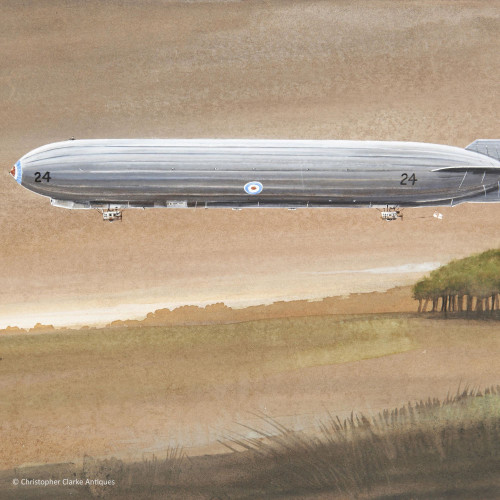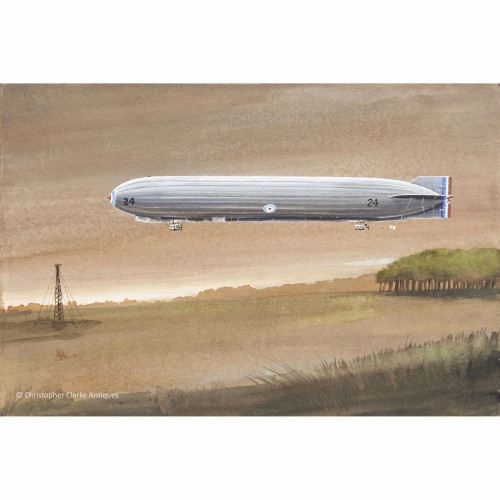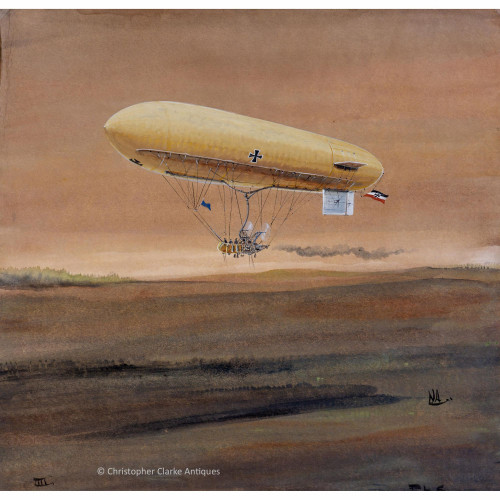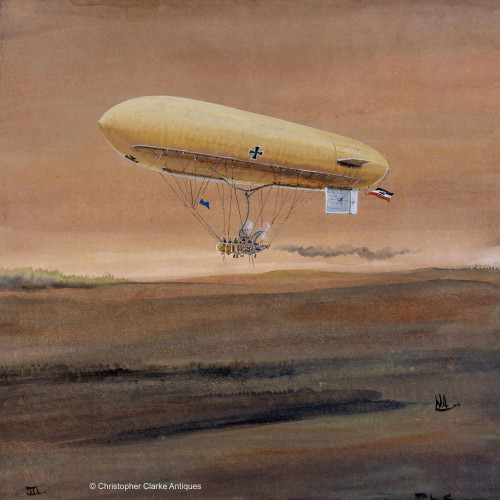Norman Arnold

Norman Gregory Arnold is best known as a film art director with over 120 movies to his credit. For our interest, he was also an artist and his skills were utilized by the Fleet Air Arm when he served during World War 1.
Norman Arnold was born to George William and Sarah Elizabeth Arnold on the 19th September 1892 in Cheshire. His father was a Wholesale Stationer but is not listed in the 1911 census with his wife, Sarah, described as Café manageress. The 19 year old Norman is described as a Designer. A few years later, with the outbreak of war, he joined the Armaments Unit of the Royal Flying Corp and was a 2nd Lieutenant rising to Acting Lieutenant on 1st April 1918. In the same year he became an Official War Artist tasked with illustrating types of aircraft and famous air battles, presumably for propaganda. Its likely that his paintings dated earlier than 1918, such as one of the Airship HMA 24, led to his appointment. The Imperial War Museum have a number of his watercolours, notably The Last Fight of Captain Ball, VC, DSO and 2 Bars, MC, 7.
Probably, whilst he was in the RFC and later RAF, his mother moved down to Surrey and she is noted as the person to be informed in case of casualty. Her address of Willow Cottage, Petersham, Surrey is the same as Norman's. He was transferred to the Unemployed List on the 21st of May 1919, 6 months before the
Norman Gregory Arnold is best known as a film art director with over 120 movies to his credit. For our interest, he was also an artist and his skills were utilized by the Fleet Air Arm when he served during World War 1.
Norman Arnold was born to George William and Sarah Elizabeth Arnold on the 19th September 1892 in Cheshire. His father was a Wholesale Stationer but is not listed in the 1911 census with his wife, Sarah, described as Café manageress. The 19 year old Norman is described as a Designer. A few years later, with the outbreak of war, he joined the Armaments Unit of the Royal Flying Corp and was a 2nd Lieutenant rising to Acting Lieutenant on 1st April 1918. In the same year he became an Official War Artist tasked with illustrating types of aircraft and famous air battles, presumably for propaganda. Its likely that his paintings dated earlier than 1918, such as one of the Airship HMA 24, led to his appointment. The Imperial War Museum have a number of his watercolours, notably The Last Fight of Captain Ball, VC, DSO and 2 Bars, MC, 7.
Probably, whilst he was in the RFC and later RAF, his mother moved down to Surrey and she is noted as the person to be informed in case of casualty. Her address of Willow Cottage, Petersham, Surrey is the same as Norman's. He was transferred to the Unemployed List on the 21st of May 1919, 6 months before the
Armistice.
In April 1919, the American film company Famous Player-Lasky Co. expanded to Britain as Famous Players-Lasky British Producers Limited with studios in Islington. Arnold became the Supervising Art Director and is credited with giving the unknown Alfred Hitchcock a job first as a freelancer and then in full employment, likely as a designer of the title cards for the company's British films. Norman Arnold went on to have a very successful career as an art director which overshadows the impressive work he did as a war artist.
2 ITEMS




